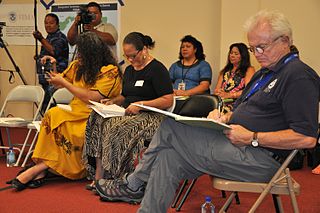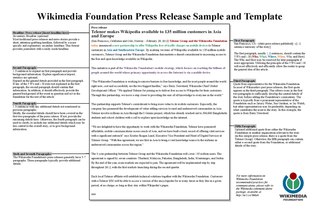Related Research Articles
Customer relationship management (CRM) is a process in which a business or other organization administers its interactions with customers, typically using data analysis to study large amounts of information.

Public relations (PR) is the practice of managing and disseminating information from an individual or an organization to the public in order to influence their perception. Public relations and publicity differ in that PR is controlled internally, whereas publicity is not controlled and contributed by external parties. Public relations may include an organization or individual gaining exposure to their audiences using topics of public interest and news items that do not require direct payment. The exposure is mostly media-based, and this differentiates it from advertising as a form of marketing communications. Public relations aims to create or obtain coverage for clients for free, also known as earned media, rather than paying for marketing or advertising also known as paid media. But in the early 21st century, advertising is also a part of broader PR activities.

A press release is an official statement delivered to members of the news media for the purpose of providing information, creating an official statement, or making an announcement directed for public release. Press releases are also considered a primary source, meaning they are original informants for information. A press release is traditionally composed of nine structural elements, including a headline, dateline, introduction, body, and other components. Press releases are typically delivered to news media electronically, ready to use, and often subject to "do not use before" time, known as a news embargo.

Direct marketing is a form of communicating an offer, where organizations communicate directly to a pre-selected customer and supply a method for a direct response. Among practitioners, it is also known as direct response marketing. By contrast, advertising is of a mass-message nature.

A press kit, often referred to as a media kit in business environments, is a pre-packaged set of promotional materials that provide information about a person, company, organization or cause and which is distributed to members of the media for promotional use. Press kits are often distributed to announce a release or for a news conference.
Marketing Communications refers to the use of different marketing channels and tools in combination. Marketing communication channels focus on how businesses communicate a message to its desired market, or the market in general. It is also in charge of the internal communications of the organization. Marketing communication tools include advertising, personal selling, direct marketing, sponsorship, communication, public relations, social media, customer journey and promotion.
Reputation management, originally a public relations term, refers to the influencing, controlling, enhancing, or concealing of an individual's or group's reputation. The growth of the internet and social media led to growth of reputation management companies, with search results as a core part of a client's reputation. Online reputation management, sometimes abbreviated as ORM, focuses on the management of product and service search engine results.

Online shopping is a form of electronic commerce which allows consumers to directly buy goods or services from a seller over the Internet using a web browser or a mobile app. Consumers find a product of interest by visiting the website of the retailer directly or by searching among alternative vendors using a shopping search engine, which displays the same product's availability and pricing at different e-retailers. As of 2020, customers can shop online using a range of different computers and devices, including desktop computers, laptops, tablet computers and smartphones.
Mass communication is the process of imparting and exchanging information through mass media to large population segments. It utilizes various forms of media as technology has made the dissemination of information more efficient. Primary examples of platforms utilized and examined include journalism and advertising. Mass communication, unlike interpersonal communication and organizational communication, focuses on particular resources transmitting information to numerous receivers. The study of mass communication is chiefly concerned with how the content and information that is being mass communicated persuades or affects the behavior, attitude, opinion, or emotion of people receiving the information.

User-generated content (UGC), alternatively known as user-created content (UCC), is any form of content, such as images, videos, text, testimonials, and audio, that has been posted by users on online platforms such as social media, discussion forums and wikis. It is a product consumers create to disseminate information about online products or the firms that market them.
Sustainability advertising is communications geared towards promoting social, economic and environmental benefits (sustainability) of products, services or actions through paid advertising in media in order to encourage responsible behavior of consumers.

Digital marketing is the component of marketing that uses the Internet and online-based digital technologies such as desktop computers, mobile phones and other digital media and platforms to promote products and services. Its development during the 1990s and 2000s changed the way brands and businesses use technology for marketing. As digital platforms became increasingly incorporated into marketing plans and everyday life, and as people increasingly used digital devices instead of visiting physical shops, digital marketing campaigns have become prevalent, employing combinations of search engine optimization (SEO), search engine marketing (SEM), content marketing, influencer marketing, content automation, campaign marketing, data-driven marketing, e-commerce marketing, social media marketing, social media optimization, e-mail direct marketing, display advertising, e-books, and optical disks and games have become commonplace. Digital marketing extends to non-Internet channels that provide digital media, such as television, mobile phones, callbacks, and on-hold mobile ring tones. The extension to non-Internet channels differentiates digital marketing from online marketing.
Online Public Relations refers to the use of the internet to communicate with both potential and current customers in the public realm. It functions as the web relationship influence among the cyber citizens and it aims to make desirable comments about an organization, its products and services, news viewed by its target audiences and lessen its undesirable comments to a large degree. Online public relations shows differences from traditional public relations. One of these is associated with its platforms. Compared with traditional public relations channels, the network systems used for online public relations vary from search to social platforms. In the era of digital marketing, the major online public relations tools for the public relations professionals and marketers such as content marketing, search engine optimization are the results of mixture of digital technologies and public relations. Those approaches have become the mainstream digital marketing machines and learning to take advantage of these marketing tools is an essential part of modern public relations strategies.
A touchpoint can be defined as any way consumers can interact with a business organization, whether it be person-to-person, through a website, an app or any form of communication. When consumers come in contact with these touchpoints it gives them the opportunity to compare their prior perceptions of the business and form an opinion.

Social media marketing is the use of social media platforms and websites to promote a product or service. Although the terms e-marketing and digital marketing are still dominant in academia, social media marketing is becoming more popular for both practitioners and researchers. Most social media platforms have built-in data analytics tools, enabling companies to track the progress, success, and engagement of ad campaigns. Companies address a range of stakeholders through social media marketing, including current and potential customers, current and potential employees, journalists, bloggers, and the general public. On a strategic level, social media marketing includes the management of a marketing campaign, governance, setting the scope and the establishment of a firm's desired social media "culture" and "tone."
Customer to customer markets provide a way to allow customers to interact with each other. Traditional markets require business to customer relationships, in which a customer goes to the business in order to purchase a product or service. In customer to customer markets, the business facilitates an environment where customers can sell goods or services to each other. Other types of markets include business to business (B2B) and business to customer (B2C).
Virtual engagement is a metric to determine the level of affinity between a company and its customers. In today's internet economy, few things matter as much to marketers as the customer's sentiment towards the brand or the product of a given corporation. Marketing professionals are engaging prospects and moving them along the customer engagement cycle to convert them into customers and finally brand advocates.
A social media newsroom is a company resource, set up to increase the functionality and usability of the traditional online newsroom.
Online presence management is the process of creating and promoting traffic to a personal or professional brand online. This process combines web design, and development, blogging, search engine optimization, pay-per-click marketing, reputation management, directory listings, social media, link sharing, and other avenues to create a long-term positive presence for a person, organization, or product in search engines and on the web in general.
Social media use by businesses includes a range of applications. Although social media accessed via desktop computers offer a variety of opportunities for companies in a wide range of business sectors, mobile social media, which users can access when they are "on the go" via tablet computers or smartphones, benefit companies because of the location- and time-sensitive awareness of their users. Mobile social media tools can be used for marketing research, communication, sales promotions/discounts, informal employee learning/organizational development, relationship development/loyalty programs, and e-commerce.
References
- ↑ Communicate magazine Archived 2012-02-25 at the Wayback Machine Hold the Front Page, Communicate magazine, November 2009
- ↑ "Archived copy". Archived from the original on 2011-07-26. Retrieved 2010-11-11.
{{cite web}}: CS1 maint: archived copy as title (link)